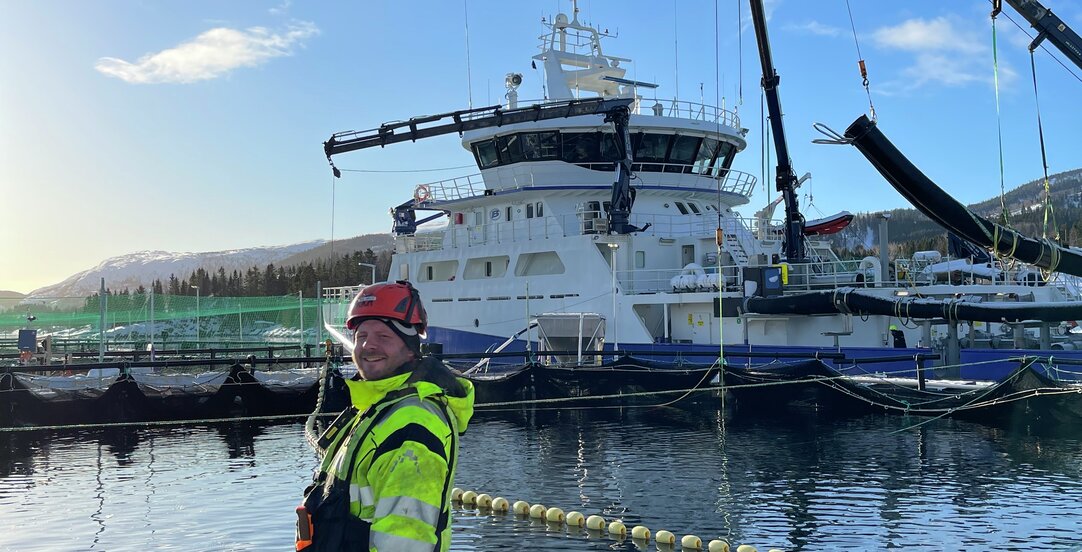Transportation of live fish – contracting out of liability for cargo damage

To meet the demand for the transportation and handling of live fish, fish farmers can either charter well-boats or enter into general contracts for carriage of goods. The type of contract used will determine the shipowners’ possibility to limit liability for loss or damage to live fish during transportation.
Lesetid 5 minutter
Although fish farmers’ demand for well-boats for transportation of live fish is mainly met by traditional contracts of carriage (Norwegian: “stykkgodsbefraktning”) concluded in the spot market, transportation of fish may also be conducted under charterparties, often in the form of time charters. As voyage chartering of well-boats is more uncommon, we will for the purpose of this article focus on time charters.
When transporting live fish, there is an inherent risk of loss or damage to the fish, which may result in significant economic loss. Traditionally, shipowners have had limited possibilities to insure against liability for such loss, making it of the utmost importance for shipowners to be able to adequately limit liability in their contracts. When seeking to limit liability, it is crucial to determine whether the contract used is in fact a time charter or whether it may be interpreted as a contract for carriage of goods.
Liability provisions in the Norwegian Maritime Code
A shipowner’s liability for loss or damage to live animals, including fish, during transportation is governed by section 277 of the Norwegian Maritime Code (“NMC”). Pursuant to section 277, a shipowner is not liable for loss or damage to live fish caused by the “particular risks” inherent to carriage of such cargo. As such, if the shipowner can establish that instructions given by the fish farmer related to the transportation have been complied with, and that the loss or damage may be caused by such particular risks, the shipowner will not be liable, unless the fish farmer proves that the loss was partly or wholly caused by negligence on the part of the shipowner or someone for whom he is responsible, including the crew.
For contracts for carriage of goods, NMC section 277 applies invariably and the parties cannot contract their way around the regulation. However, section 277 does not apply directly to time charters, see NMC section 253. Thus, the parties are free to agree on deviating principles for division of risks and liabilities under time charters. The provisions of section 277 will, however, apply as relevant background law if the parties to a time charter have not specifically agreed on an alternative regulation of risks and liabilities. Moreover, section 277 applies directly and invariably to a shipowner’s liability towards a third-party holder of a bill of lading issued under a time charter, provided that the bill of lading determines the legal relationship between the shipowner and the holder, see NMC section 253. The parties involved in chartering of well-boats are also advised to take note that NMC section 277 applies invariably for voyage chartering in domestic trade in Norway, see NMC Section 322 with reference to section 347.
Consequently, should the parties wish to deviate from the provisions on liability in NMC section 277, they may do so by way of a time charter. If they choose this approach, it is important that they include in the contract clear and specific provisions for allocation of risks and liabilities.
Where NMC section 277 applies, it should also be noted that NMC section 280 provides basis for the carrier to limit its liability for loss or damage to cargo. However, depending on the situation at hand, the limitation of liability in NMC section 280, may exceed the value of the cargo carried, and thus not provide an actual limitation to the carrier’s liability. Whether to deviate from the provisions on liability in NMC section 277 will thus often be a question of whether the liability shall be limited beyond the limits of NMC section 280.
Guiding principles for determining the type of contract
Occasionally, disputes may arise regarding the type of contract agreed upon, making it necessary to determine if the contract entered into is in fact a time charter or a contract for carriage of goods. Although a contract is intended to be a time charter, there is still a risk that the courts will interpret it as a contract for carriage of goods, which in turn will render any deviations from section 277 void.
The NMC does not specifically define or clearly distinguish between time charters on the one hand, and contracts for carriage of goods on the other. Although the definitions in NMC section 321 gives some guidance, the classification of the contract will generally depend on an interpretation of the specific contract.
Some questions which may provide guidance when trying to determine the classification of the contract, are:
- Has the contract been concluded on the basis of a standard charterparty form, or is it called a charterparty?
- Is the shipowner’s obligation under the contract to provide the fish farmer with a vessel (in whole or in part) for a certain period, or is the shipowner’s obligation merely to provide transportation of a certain amount of goods, in this case fish, from one destination to another? In the first case, the contract will normally be classified as a time charter, whilst in the latter case, the obligation of the shipowner would generally suggest that the contract in question is a contract for carriage of goods.
- Is the price calculated on the basis of a daily hire or on the basis of the quantum of goods transported? While NMC section 321 defines a time charter as a contract where payment is based on hire per day (or pro rata thereof), contracts for carriage of goods are often compensated based on the quantum of goods transported.
- Does the contract oblige the fish farmer to pay variable costs such as bunkers and port expenses? Under a time charter the fixed costs related to maintenance and crew are normally covered by the shipowner, whilst variable costs such as bunkers and port expenses are normally covered by the charterer. Under a contract for carriage of goods on the other hand, all costs are generally covered by the shipowner and included in the freight. Hence, if the fish farmer under the contract is obliged to cover the variable costs, this may suggest that the contract should be interpreted as a time charterparty.
The answers to the above questions may provide some guidance when trying to establish how a contract should be classified. However, the question of classification will inevitably depend on a concrete assessment of the specific facts at hand. Thus, there is no decisive and clear-cut line to be drawn between a time charter on one hand and a contract for carriage of goods on the other hand. In order to minimise the risk of undesirable disputes, the parties are advised to express clearly in the contract that it is the parties’ intention to enter a charter party, and to keep in mind the distinctions between the two types of contracts set out above. By considering the shipowner’s obligations, pricing mechanism and responsibility for variable costs, among other things, the parties may ensure that the terms of the contract in fact amounts to those of a time charter.
Main photo: Akvafuture


